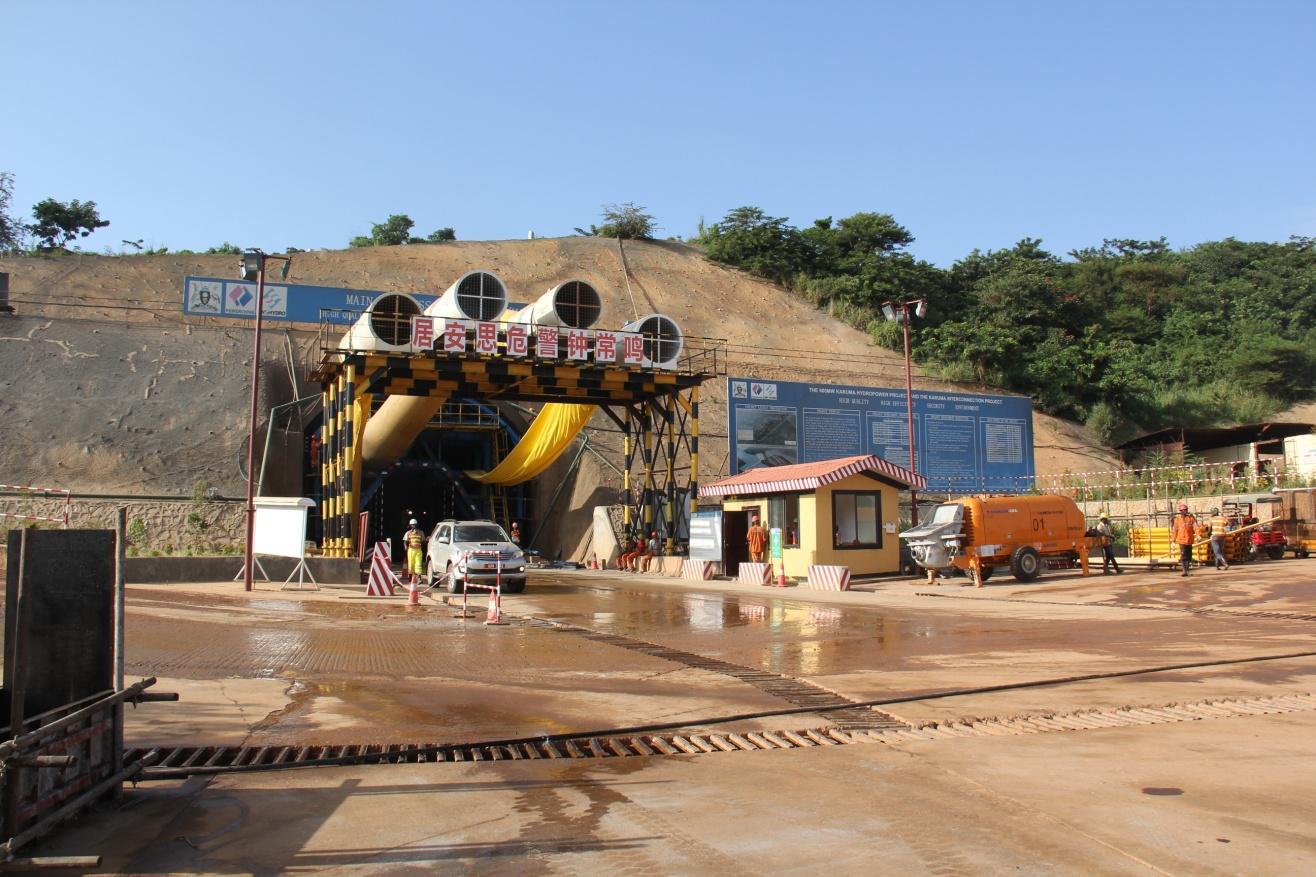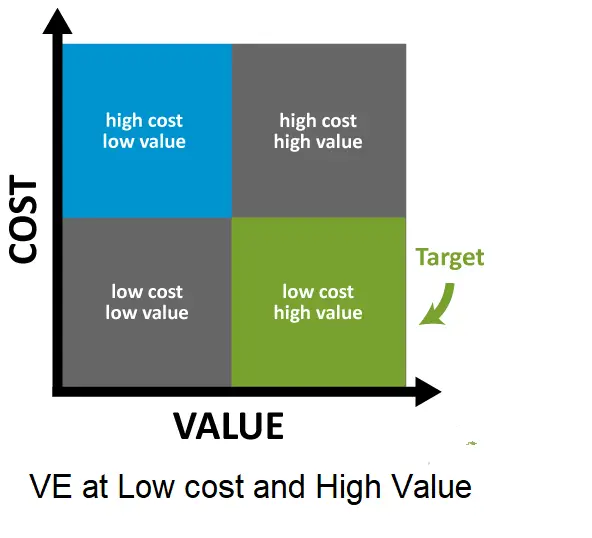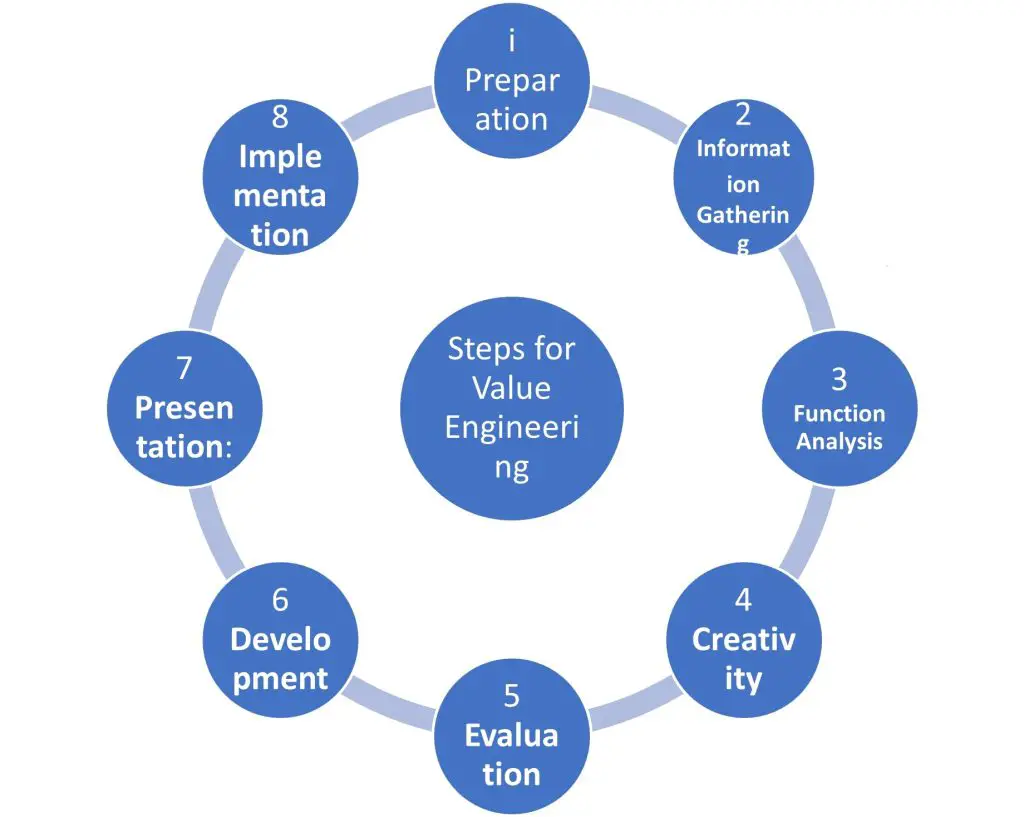
What Is Value Engineering in Reference to Project Management – Getting worth at least cost
Topics Discussed
Key Features of Value Engineering
Understanding Value Engineering
Step by Step Methodology for Value Engineering
VE Enhances Organisation’s Achievements
Value Engineering Defined
Value engineering is a systematic, organized approach to providing necessary functions in a project at the lowest cost. Value engineering promotes the substitution of materials and methods with less expensive alternatives, without sacrificing functionality. It is focused solely on the functions of various components and materials, rather than their physical attributes. Value engineering is also called value analysis
Project management is the use of specific knowledge, skills, tools, and techniques to deliver something of value to people. The development of software for an improved business process, the construction of a building, the relief effort after a natural disaster, the expansion of sales into a new geographic market—these are all examples of projects….PMI

Any work taken up is a project, if taken in planned manner to deliver goods and services as output. The Value engineering if applied to project management, provide functionality, better goods supply, services, or system at the least cost.
Adopted in a crisis by Lawrence Miles of General Electric during World War 2… during the shortage of raw material as Value Analysis. He used similar other low-cost materials for the desired functionality of the product. Now it is mainly used as Value Engineering.
Value engineering is used to solve problems, by identifying them, and eliminate unwanted costs and improve function and quality.
The Value Analysis (VA), the Value Methodology (VM) and the Value Engineering (VE) are the related words having nearly same meaning for a systematic and structured approach for improving projects, products, processes, services, systems and business units.
These are used to analyse and improve manufacturing products and processes, design and construction projects, business, and administrative processes, and both public and private sector services and organizations.… (SAVE International)
The Society of American Value Engineers International (SAVE International) defines value engineering as a “function-oriented, systematic, team approach to provide value in a product, system, or service.”
VM helps achieve an optimum balance between function, performance, quality, safety, and cost. The proper balance results in the maximum value for the project.
A product, service or system after development must be user friendly as regards to its attributes such as aesthetic, functionality, reliability and cost. Also, it needs to ensure that Health, Safety, Security and Environmental aspects are given due care in development process.
The end user wants maximum functional performance of the product, system, or services at the least cost. And to provide such facility to end user, is done by application of VA, VE and VM.
Key Features of Value Engineering
Value engineering is a systematic and organized approach in project management to provide necessary directions / actions , from project initiation to project closure at the lowest cost.
Value engineering promotes the substitution of materials and methods with less expensive alternatives, without sacrificing functionality .
It is centred exclusively around the elements of different parts and materials, rather than their physical characteristics.
Value Engineering is not
Cost Cutting
(Cost reduction seeks to cut initial costs, often at the expense of project quality.)
(Cost reduction is usually a reaction to budget overruns.)
Cost reduction is an informal process.
Cost reduction generally involves only a few management personnel.)
Design Review
Project Elimination
Scope Reduction
Quality Reduction
Detailed Cost Estimating
Redesign
Understanding Value Engineering
The value engineering can be understood from the value and cost of the project or activity.
VE uses a goal, multi-restrained group, and prepared facilitator.
VE gives a coordinated development, execution and revealing system.
VE tries to keep up with or further develop execution while diminishing TOTAL expenses.
VE is a pre-arranged distribution of time and e exertion.
VE is an exceptionally organized cycle utilizing a proper system.
VE gives a coordinated development, execution and revealing system.
| Value= Functionality of product / cost of the product |
Value means – how much something is worth compared with its price. The worth includes the functionality and quality aspect
Value Analysis and Value Engineering (VAVE) are used for increasing the value of the product.
Value Analysis (VA) was first used during and after World War 2. The existing products were analysed with the use of alternative resources as there was scarcity of resources during those days.
Now VA is used on the already developed product . After the analysis the value of the product is modified with some changes or upgrading the product. The functionality and quality are maintained at minimum cost.
Value Engineering has the same objective but is applied for the product yet to be developed.
Value Engineering is the “official” term used by SAVE International. The term “engineering” was used to identify the process as it is applied to design and construction
Value Management
This less commonly used term refers to its application to business processes
VAVE can be applied to project life cycle and the product life cycle.
The value can be increase by increasing the functionality of the product or by decreasing the product cost.
The goal isn’t to trim the cost, but to maximize functionality of the product at the lowest possible cost.
An activity may have following value and cost relationships
Low value and low cost
Low value and high cost
High value and high cost
High value and low cost – It are a desirable outcome of activity or project. The purpose of value engineering is to impart this attribute to the activity.

With value engineering, cost reduction should not affect the quality or functionality of the product.
Step by Step Methodology for Value Engineering

VAVE is applicable in all sorts of activities related to product development during product life cycle. It is valid for all sectors related to project, product, system development including service sectors, as these sectors provide products and services whose functionality and quality can be improved.
VE is a group activity. A gathering of venture stakeholders such as planners, originators, assessors, designers, work force and project team involve scoring the most ideal product
Value engineering is now a methodology and must be considered at all projects. Whether a team wants to substitute one material or system for another, consider alternative building methods or limit environmental impact, the process of value engineering remains generally consistent.
The VM follows SAVE International’s standard job plan, which consists of eight phases:
- : Identify what is to be studied (the VM study subject) and when it is to be studied. Identify scope of a project.
- : Gather information to better understand the project.
To determine user needs This step is all about collecting data and getting a clear understanding of the project. Materials, schedule, costs, drawings, and specifications are studied until the team is familiar with the project concept, who will be using the end product and what the expectations entail.
The purpose is
To gather and tabulate information concerning the item as presently designed
To build team knowledge and understanding of the project
To completely understand the specific use of function requirements of the item
To visit the site (preferable) Process continues throughout remainder of the study.
3:Functional Analysis
Analyse the project to understand and clarify the required functions. Function of an item is the purpose or intended use and may be answered with following questions:
What is this?
What is it supposed to do?
What else can it do?
The product has a primary function ( the main function for which it is used – A mobile has main function to communicate the voice to distance places and it is the primary function).
The secondary function are the other activities that can be done through mobile such as taking notes and photos and videos. The secondary function may also include the benefits it provides to the society covering health, safety, security and environment aspect.
Once the functions are identified, the next step is to find various ways by which the functionality of the product can be enhanced. The best alternative is that which enhances the value of the product, system or service. This is done with the help of creativity.
4:Creativity
Generate ideas on all the possible ways to accomplish the required functions. The idea generation process should not be affected by product specifications, cost and rules and regulations including enforcement measures. The ide generation process must come from free thinking and the limits of idea generation should not be controlled.
The all ideas generated are further put o evaluation process to select the best alternative feasible for development.
5: Evaluation
Evaluate the ideas and concepts and select the feasible options for value improvements.
Following points, but not limited to may be considered for assessment of development process.:
Product design ability
Constructability
Acceptability of the product
Operational ability
Supporting Quality Control and Quality Assurance measures
Customer / stakeholder’s satisfaction
Low life-cycle cost
Finally develop the alternatives having increased values.
6: Development . The best alternatives are taken up for development process.
Development Phase Purpose is
To select the best alternative(s)
To develop complete written and oral proposals
Development Phase Techniques
Recommend specifications – Detailed information about how product should be built for acquiring required functionality and features.
Make sure your report describes the disadvantages as well as the advantages, gathered convincing facts, assured technical adequacy, cost planning ( Life Cycle Costs) and finalised proposal
7:Presentation Phase. Present the value recommendation to the project stakeholders.
Presentation Phase Purposes is
To present value engineering study proposal(s) to the decision makers/stake holders
To obtain approval/support To enhance potential implementation
8:Implementaion. Sponsor and/or stakeholder acceptance of VM alternatives to be incorporated into the subject under study.
The best results are achieved by a multi-disciplined team with experience and expertise relevant to the project being studied. A Certified Value Specialist (CVS) usually leads the team to ensure the VM is properly followed.
VE Enhances Organisation’s Achievements
VM is embraced by organizations, ventures, and government offices all throughout the planet. Building planners and project workers, car makers, drug organizations and public, local, and nearby state-run administrations, all utilizeation the process consistently. The advantages they accomplish utilizing VM far offset the speculations as decreased time and cost, and expanded quality add to corporate achievement and citizen esteem.
Where Do I Learn More About the Value Methodology?
The best and most convenient way to learn the techniques of VM, their application and their management is as a member of SAVE. Your SAVE membership gives you opportunities for career growth, professional development, information, contacts, new ideas, involvement, and recognition. All this lays the foundation for your greater career success! SAVE membership
The best and most helpful method for learning the procedures of VM, their application and their administration is as an individual from SAVE.
SAVE participation offers a chance for career growth, professional development, information, contacts, new ideas, involvement and recognition. All this lays the foundation for your greater career success!

